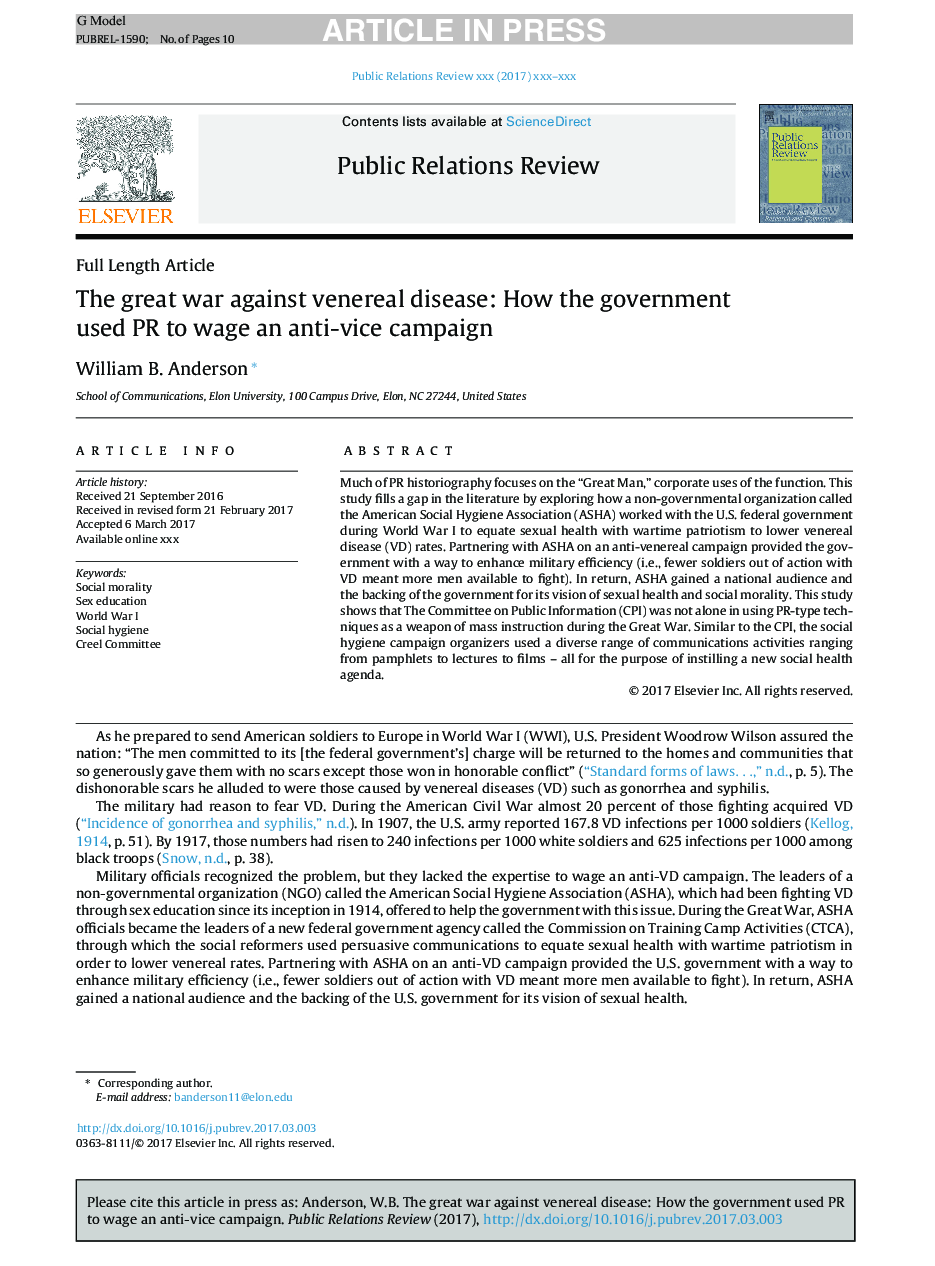| Article ID | Journal | Published Year | Pages | File Type |
|---|---|---|---|---|
| 4761757 | Public Relations Review | 2017 | 10 Pages |
Abstract
Much of PR historiography focuses on the “Great Man,” corporate uses of the function. This study fills a gap in the literature by exploring how a non-governmental organization called the American Social Hygiene Association (ASHA) worked with the U.S. federal government during World War I to equate sexual health with wartime patriotism to lower venereal disease (VD) rates. Partnering with ASHA on an anti-venereal campaign provided the government with a way to enhance military efficiency (i.e., fewer soldiers out of action with VD meant more men available to fight). In return, ASHA gained a national audience and the backing of the government for its vision of sexual health and social morality. This study shows that The Committee on Public Information (CPI) was not alone in using PR-type techniques as a weapon of mass instruction during the Great War. Similar to the CPI, the social hygiene campaign organizers used a diverse range of communications activities ranging from pamphlets to lectures to films - all for the purpose of instilling a new social health agenda.
Keywords
Related Topics
Social Sciences and Humanities
Business, Management and Accounting
Marketing
Authors
William B. Anderson,
